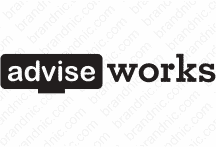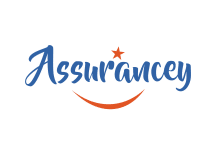Read Time: 10 minutes
As a company owner, you can avoid a costly and stressing lawsuit for trademark infringement; therefore we bring you some of the most shocking cases of US businesses that violated the law.
Understanding a trademark infringement
Intellectual property (IP) is a crucial tool to protect everything that a human can create. In this case, trademarks are used to distinguish a product, service, and even logos from others in the marketplace. However, disputes can always appear and lead to trademark infringement.
In fact, the illegal use of a trademark is considered infringement. It is important to take into account that there are some laws that are part of any trademark legal process such as the Lanham Act and the common law.
Most of the famous cases of trademark infringement had some true elements before going into court. This also applies to any mark holder who wants to file a lawsuit. For instance,
- The person who wants to start the lawsuit must own the mark.
- The trademark has to be valid for legal protection.
- The illegal use of the mark must be in commerce.
Violating a trademark can take a company to a long tedious legal process that most business owners usually take for granted.
Unfortunately, this was the case of some US companies that are now used as examples of what NOT to do in your business.
Recent Trademark Infringement Cases in the US
The last decade brought new tools to explore the business world. Some companies grew exponentially, but others lost thousands due to lawsuits. In fact, a trademark violation lawsuit can cost from $130,000 to $700,000 in addition to all the time you’ll spend in court.
Whether you are here to avoid trademark infringement or you just want to read more about trademarks, here you have some popular cases of trademark violation in 2019.
1. Nirvana VS Marc Jacobs
A case that started at the end of 2018 ended in a long lawsuit over a smiley face logo. It all began when a clothing designer Marc Jacobs, as well as Neiman Marcus and Saks Fifth Avenue, launched a line that was very similar to rock band Nirvana smiley face logo.
According to the lawsuit, this logo matched almost perfectly to the logo that belongs to Nirvana. In fact, the only difference was that the “x” used in Nirvana’s logo was changed by an “M” and a “J”.
Moreover, Nirvana alleged the Marc Jacobs’ logo infringed the band’s copyright by doing some replacements to make it look unique. Luckily for Nirvana, it is publicly known that the band has continuously used that logo since 1992 to identify its products and music.
Yet, Marc Jacobs used this argument to countersue Nirvana a few months later. According to Jacobs’ lawyers, the case was “too deficient” in proving the original designer of the band’s smiley face. In fact, Jacobs claimed that the logo was a commonplace image that he used as an inspiration for his designs
To this date, Nirvana’s surviving members Krist Novoselic and Dave Grohl haven’t recognized who truly created the logo. Jacobs’ countersuit demands the band’s claim to the alleged logo be removed and his company’s money loss to be recovered.
This case hasn’t finished yet since Nirvana’s lawyers claimed that they will continue with the trademark infringement lawsuit.
2. Prime Inc VS Amazon
Even large companies can take trademark infringement for granted such as the lawsuit that Amazon is facing.
This story began when Amazon started using the term “prime” on its trucks which made the trucking company Prime Inc sue the e-commerce company. Prime Inc had actually warned Amazon of the trademark violation a few years ago, but the notification was ignored when the e-commerce business continued to use “prime” markings on its trucks for commercial use.
Prime Inc then started the lawsuit through the Appeal Board and Trademark Trial in Missouri. Prime Inc’s legal team claimed that Amazon’s actions are willful and malicious. Moreover, they have a considerably terrible effect on the trucking company’s marketing efforts.
Amazon created its “prime” service in 2015, but it began to use it on its trucks a few years later even though Prime Inc has been using it for nearly 40 years.
- Different logos to the same problem
Amazon did change the “prime” original logo using a lowercase letter and a different font. According to Prime Inc, however, it still contains the same meaning and commercial impression. In fact, Amazon could have created “Amazon Prime” as a service instead of using just “Prime” which damages the perception of the original “prime” service.
Prime Inc’s trademark infringement lawsuit demands Amazon to stop using the word “prime” on its truck since it causes customer confusion between marks. In other cases, this one has just started and, as far as we know, it may take years before a solution can be found.
3. Deckers Outdoor Corporation VS Australian Leather
US companies are not excluded from international trademark infringement cases. This was the case of the American business Deckers Outdoor Corporation who started a lawsuit three years ago against Australian Leather. The United States-based company alleged that Australian Leather had illegally used the brand name of their sheepskin-lined boots “UGG”.
It appears that the Australian “UGG” caught the American company’s attention when they started selling it on e-commerce websites. The boots generate over $1 billion in revenue a year for the American Business. However, Australia Leather claimed that the term “UGG” was generic and should not be considered a trademark infringement case.
This argument became a terrible decision since the Australian business confirmed that they were willfully infringing upon the trademark which allowed Deckers Outdoor Corporation to continue its trademark infringement letter as well as a design patent infringement claim in relation to the design of the boot.
Australian Leather fought back saying that the American business held a global monopoly for prohibiting other companies to produce similar boots since it is a generic design. Furthermore, the trademark infringement lawsuit seemed to turn in favor of Australia Leather when it argued that the term “UGG Australia” shouldn’t be used by the American company since the boots were actually manufactured in China.
In 2019, however, “UGG” was rejected as a generic term by a federal judge who ordered Australian company to pay $450,000 for trademark violation. The case isn’t over, but it became a never-ending nightmare for Australian Leather.
4. Lakeshore Learning Material VS Lego
Even toys can cost you thousands if it is related to trademark infringement. Last year, Lego sued Lakeshore Learning Material saying they had copied the “minifigure” that is trademark protected.
Even though Lakeshore Learning Material launched the product under the name “on-the-go-brick building set”, Lego alleged that the product was too similar to their original design. Moreover, they stated that the trademark infringement had incredibly harmed their brand since it has caused confusion between products.
These mini-figurines have made Lego earned over $1 billion in revenue. Furthermore, they are recognized worldwide and they became an important element for Lego’s brand identity.
- Trademark registrations as a defense
Lego has proved to have trademark and copyright protection internationally. They actually have two copyright and trade dress registrations. All of them described the general and specific features of each of their products including the infringed mini-figurines.
The case has just started and Lakeshore Learning Material hasn’t taken any step, but Lego proves to be confident to win this lawsuit. The demand includes a claim to the Connecticut state trade. The company is also seeking the destruction of the infringing products.
5. Patagonia VS Anheuser-Busch InBev
Does trademark infringement occur by accident or due to a lack of attention? We can never be sure, but Anheuser-Busch InBev (AB InBev) may show us the answer. The brewing company woke up on its left foot when it decided to use “Patagonia” as the name of a new beer. Unfortunately, they didn’t notice that there was a popular clothing retailer with the same name.
Things became worse when the original Patagonia company started a lawsuit against AB InBev claiming that the beer confused customers and it was part of a trademark infringement case. Patagonia’s legal team is prepared for any trademark violation lawsuit. In fact, they even sued President Trump after he tried to limit protected national parks.
Moreover, Patagonia has been in the marketplace for over 30 years, therefore, the outdoor clothing company has a good argument when they say that AB InBev uses its name to earn more reputation.
- A marketing effort or a malicious intention?
Patagonia company took some advantage when it alleged that the AB InBev’s beer was being sold in Colorado ski resorts where Patagonia’s products were widely used as well. It seemed a good marketing strategy for the beer business, but it actually added confusion to the identity of the Patagonia brand.
The trademark infringement case indicates that AB InBev’s beer name wasn’t an accident. In fact, it used a similar logo to identify the beer and it even claimed that they owned a trademark registration for “Patagonia”.
The fight isn’t over since Patagonia alleges that AB InvBev fraudulently gained that trademark which hasn’t been used for six years.
The Most Famous Cases of Trademark infringement of the Last Decade
We just showed you some examples of trademark violation in 2019, but now think about how many cases you can find throughout history. Remember that some trademark infringement cases are nasty and malicious. No wonder they are used as examples of what NOT to do in the business world.
Here you have some other examples of cases that you should learn from:
-
House of Cards VS D2 Holdings
D2 holdings sued the brand that is actually the mastermind behind Netflix, MRC II Distribution, and its thriller, House of Cards.
It seems that D2 had trademarked “House of Cards” for its entertainment products and services for more than ten years and it has even been licensed to a radio show.
According to MRC, they have attempted to file for a trademark registration several times before the show was launched. D2’s legal team demands the infringement to stop as well as the goods and gaming machines related to the name.
Furthermore, D2’s claims that MRC knew that the trademark wasn’t available since they repeatedly tried to register “House of Cards” as their trademark, but failed. This case hasn’t been solved yet, but it’s a good example of how a little mistake can lead to future disputes.
-
GoDaddy VS Academy Awards
A legal battle that started a few years ago has finally ended. The Academy Awards sued the domain retailer GoDaddy for cybersquatting its company. According to the Academy Awards’ lawyers, GoDaddy allowed its audience to purchase similar domain names that caused customer confusion between marks (2012Oscars.com, for example). These domains let individuals gained revenue from the Academy Awards’ reputation.
Everything seemed to go well for the film awards. They even proved in court over 50 domains that belonged to GoDaddy. Unfortunately, the verdict was in favor of GoDaddy since it didn’t have any “bad faith intent” to collect any profit from their goods.
Another interesting case is the product confusion between Forever21 and Adidas. Everything started when Forever21 created “three stripes” design products which were very similar to Adidas’ goods.
It didn’t take Adidas much time to file a lawsuit against the alleged infringer claiming they had invested thousands to design and protect the “three stripes” that identified its company. Furthermore, the design had already been registered as a trademark.
The legal teams of both have continued to counterclaim each other over the years, but the verdict is still pending. The only thing we know is that Adidas is sure to prove that the design is more than an accessory since it actually represents its whole company.
One of the most popular trademark infringement cases of the last decade began when Starbucks sued its rival, Coffee Culture Café when it released a similar product called “Fredoccino”.
Starbucks’ lawyers alleged that the product was incredibly similar to the one they were selling. Moreover, they used almost the same design and name which was very likely to cause confusion among customers.
According to Starbucks, Freddocino was infringing its registered trademark called “Frappucino” by using misleading packaging to make it look “legal” as a registered trademark.
Coffee Culture Café has removed “Freddocino” and created “Freddo” instead. However, this hasn’t stop Starbucks from continuing the lawsuit.
Key elements to Avoid Trademark Infringement
These examples of trademark infringement cases are sure something we can learn from. If you read the reasons why the companies were sued in the first place, you’ll notice that there are some factors that can determine the future of your business.
Building a company is not just creating some branding strategies. Legal aspects are crucial to protect your products and services. Hence, if you skip everything related to trademarks, you’ll probably run into a lawsuit.
What to do: Do your homework and make sure you understand the basics terms of intellectual property. For example, a patent is different from a service mark and a trademark. This also means you should determine the type of trademark you are registering as well as any logo, slogan, or even colors.
- Checking for Availability
Some of the trademark violation cases are due to a lack of research. In other words, the mark holders chose a trademark that wasn’t available and they still continued to use it.
This is a terrible decision to start in the marketplace. In fact, it is a mistake that can cost a lot of money and time to fix.
What to do: Go to a trademark registration office website such as the United States Patent and Trademark Office’s (USPTO) database and search for registered trademarks that are similar to your business.
Use the Trademark Electronic Search System (TESS) to choose any search option.
Don’t make assumptions about what your business will be. Most infringement cases start because the business owner thought its mark was different enough from the competition. There are other cases where the mark holders were aware of the similarities between marks but ignored them since they believed they were effective marketing strategies.
What to do: Looking for professional help is a great option to create a unique mark that will never be sued for any trademark infringement.
There’s no question that taking some time to learn about trademarks can boost your business safely. However, human errors exist and they will always bring terrible risks. This is why you need to use these cases to keep yourself away from any lawsuit.
What we can learn About Trademark Lawsuit Cases
If you already started your business, we recommend you being proactive. This means keeping up with the intellectual property news and learning about any changes in the trademark laws.
On the other hand, if you are about to build a startup, the best option is to begin a registration process to make sure everyone is on notice in relation to your trademark. Remember that it is very easy to cause confusion among marks. There are some confusing elements that determine a lawsuit for trademark violations.
- How similar the companies are even if they are not identical.
- The similarity between products and services (this excludes patents).
- The recognition of the mark in the marketplace.
- Evidence to prove that the mark causes confusion.
- The intentions of the defendant.
- Where the companies are located.
- How customers perceive the mark.
- Whether the companies’ market is likely to grow.
As we read more and more of trademark infringement cases, it seems that even specific terms can be a factor of customer confusion between marks. The only way to avoid this type of infringement lawsuit is to understand everything related to intellectual property. For instance, business owners tend to forget the difference between patents and trademarks.
Trademarks, patents, and copyrights are part of the intellectual property. A patent is used to avoid others from selling or making an invention for a certain period of time.
On the other hand, copyright is used for creative and artistic work. This means only the original creator has the right to reproduce the work that is being protected by the copyright.
Keep your Business Safe
As you become aware of how trademarks work, you are more likely to avoid a lawsuit. Moreover, you can also protect your mark from someone who wants to use your trademark without your authorization.
In this case, you can send a desist letter and then hire an attorney in order to file a lawsuit.
Brandnic is Available 24/7
We understand that trademarks can be confusing as well as creating a business. Luckily, Brandnic offers professional help that will guide you through the whole process of choosing a brand name.
It’s our mission to help you create an effective list of options so you can narrow it down to your favorite business name. What’s more, every purchase you make includes a domain name, logo design, and free logo revisions.
If you are worried about the legal status of the brand name you want to choose, don’t worry! At Brandnic, you can have trademark monitoring, as well as a common law trademark, cleared names!
We are available 24/7 to answer any queries you have. Let Brandnic help you today and create company name ideas in just a few steps.






